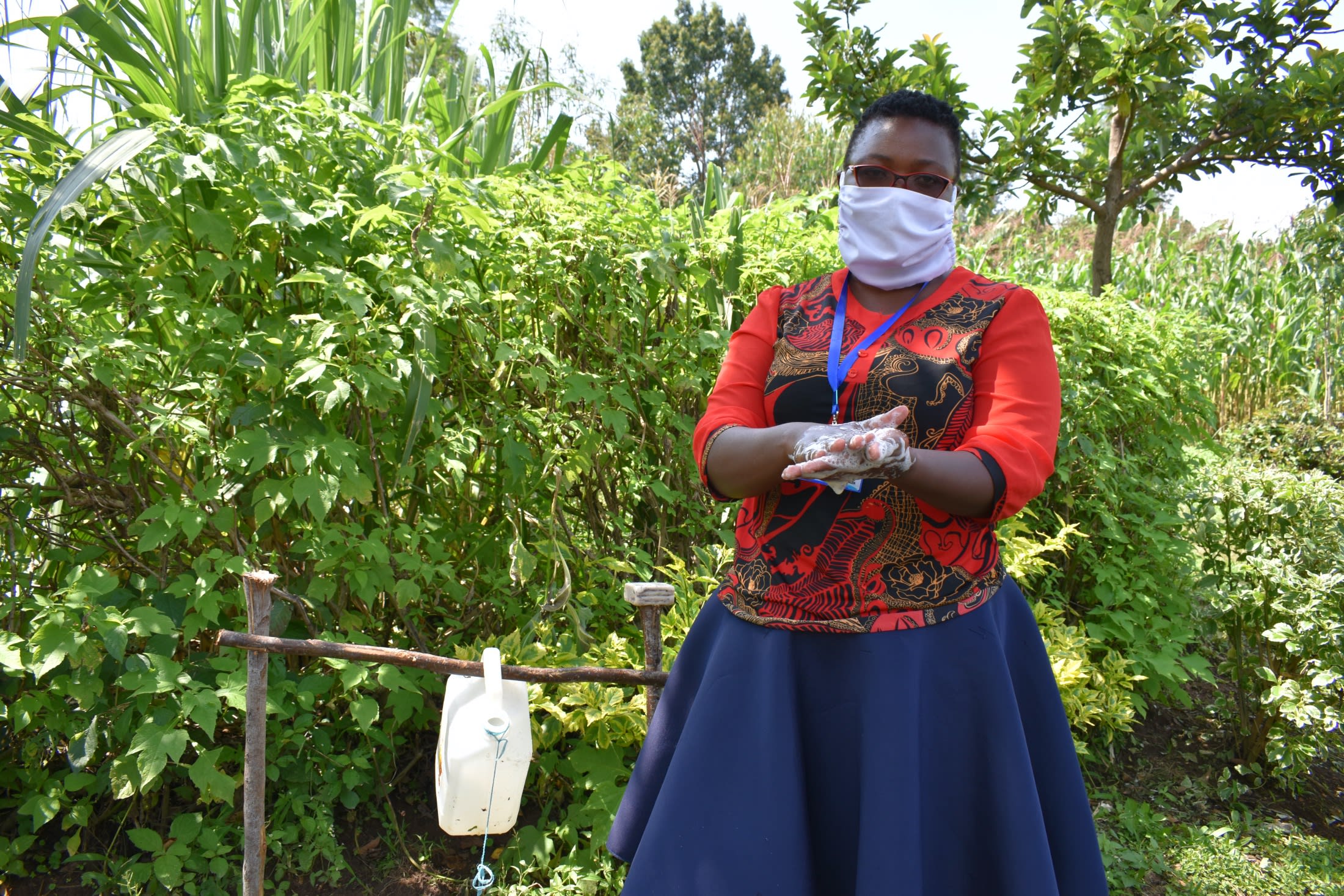This project is a part of our shared program with Western Water and Sanitation Forum (WEWASAFO). Our team is pleased to directly share the below report (edited for clarity, as needed).
Welcome to the Community
A normal day in Shitungu Community starts at around 5am when parents wake up to prepare their children for school. Once they see their children off, they usually go to their farms to tend maize, bananas or beans. Parents who can afford the tools needed to form and bake bricks do so; bricks from this area find a great market in Kakamega Town, which is currently undergoing infrastructure development.
This area is highly populated. If not on the farm or baking bricks, men will either work as causal laborers or drive "boda boda," or motorbikes, for a living. Women are responsible for all the household chores: fetching water, cleaning, cooking, and tending children, and yet they're also expected to do some work on their farms or kitchen gardens.
Water Situation
Mmbone Spring is a main source of water for hundreds of people living in Shitungu. Reportedly, 350 people rely on it for their drinking, cooking, cleaning, and irrigation needs.
Since the spring is unprotected, it is open to contamination from surface runoff that washes feces and farming chemicals into the water. People also step right into the water as they fetch it, and animals often drink from it. Since the water is so shallow, a lot of time is wasted by the next woman in line who has to wait for the stirred up mud and dirt to settle again. Adults most often carry this dirty water in 20-liter jerrycans, while children cannot manage to carry such a heavy weight and opt for smaller plastic jugs instead.
Community members report that they suffer from waterborne diseases like typhoid, with diarrhea and stomachache a part of everyday life.
Sanitation Situation
Most of the households that rely on Mmbone Spring do not have the sanitation facilities they need. Less than half have even a basic pit latrine. The ones we observed are made of mud, branches, and iron sheets. Most latrine floors are made of mud and branches suspended over the pit - and as the wood rots, these latrines become very dangerous for the users.
Nobody has a hand-washing station, and only a handful of people have helpful tools like dish racks and clotheslines to safely dry their belongings.
Community members are very excited about the opportunity to attend hygiene and sanitation training.
Plans: Hygiene and Sanitation Training
Community members will attend hygiene and sanitation training for at least two days. This training will ensure participants are no longer ignorant about healthy practices and their importance. The facilitator plans to use PHAST (Participatory Hygiene and Sanitation Transformation), CLTS (Community-Led Total Sanitation), ABCD (Asset-Based Community Development), group discussions, handouts, and demonstrations at the spring.
Training will also result in the formation of a committee that will oversee operations and maintenance at the spring. They will enforce proper behavior around the spring and delegate tasks that will help preserve the site, such as building a fence and digging proper drainage.
Plans: Sanitation Platforms
On the final day of training, participants will select five families that should benefit from new latrines.
Training will also inform the community and selected families on what they need to contribute to make this project a success. They must mobilize locally available materials, such as bricks, clean sand, hardcore, and ballast. The five families must prepare by sinking a pit for the sanitation platforms to be placed over. All community members must work together to make sure that accommodations and food are always provided for the work teams.
Plans: Spring Protection
Protecting the spring will ensure that the water is safe and adequate for drinking. Construction will keep surface runoff and other contaminants out of the water. Fetching water is predominantly a female role, done by both women and young girls. Protecting the spring and offering training and support will therefore help empower the female members of the community by giving them more time and efforts to engage and invest in income-generating activities.

 Protected Spring
Protected Spring
 Rehabilitation Project
Rehabilitation Project






























